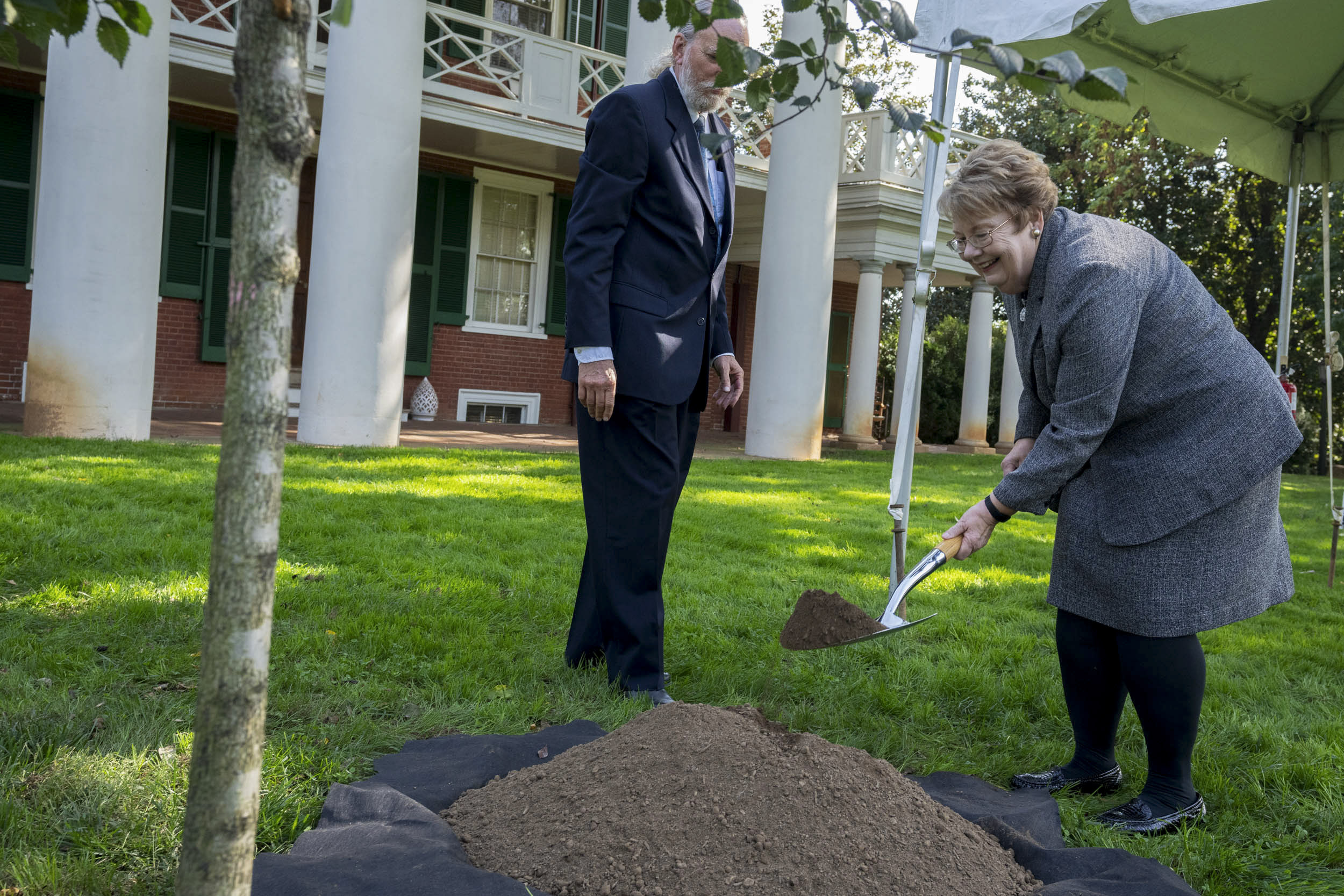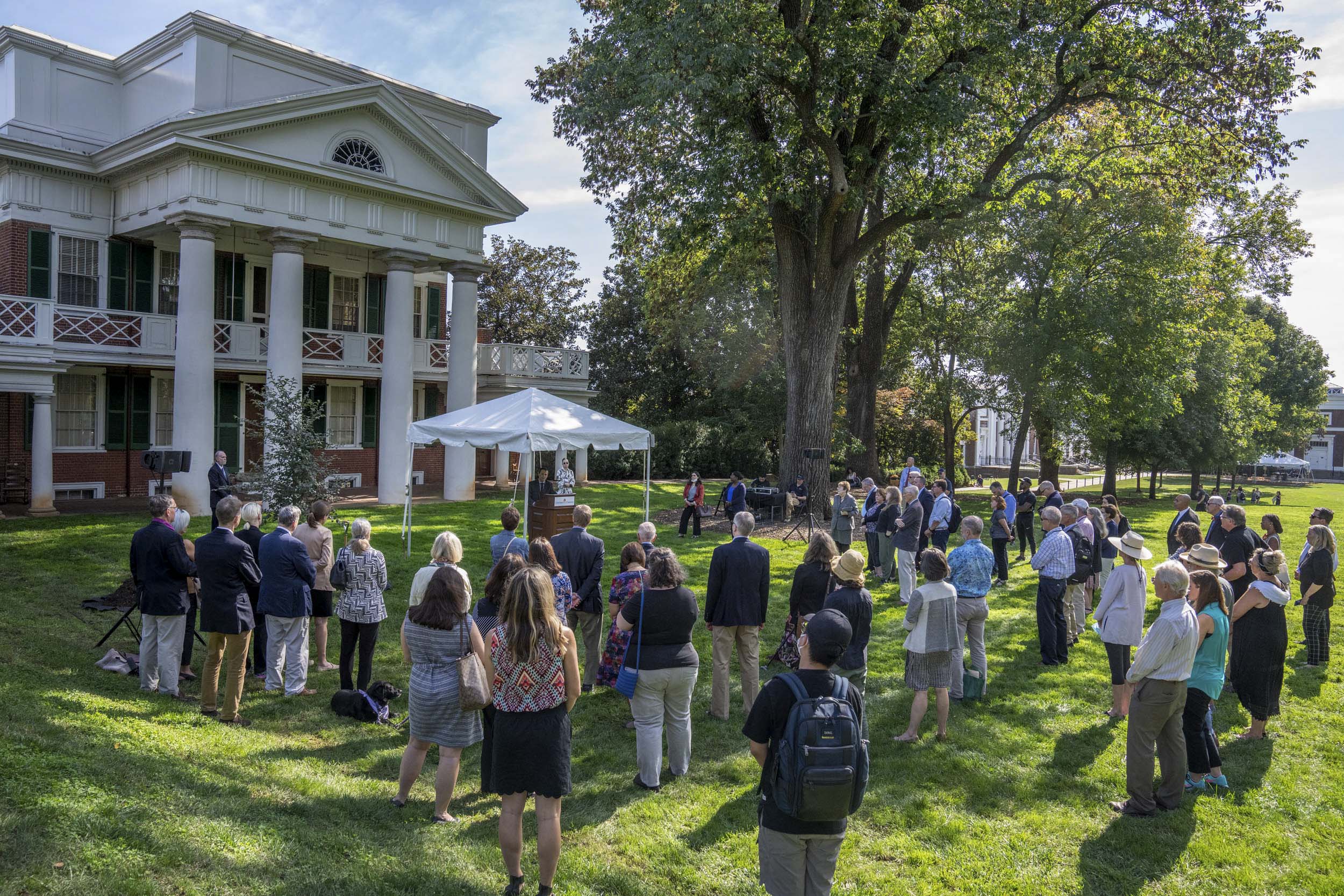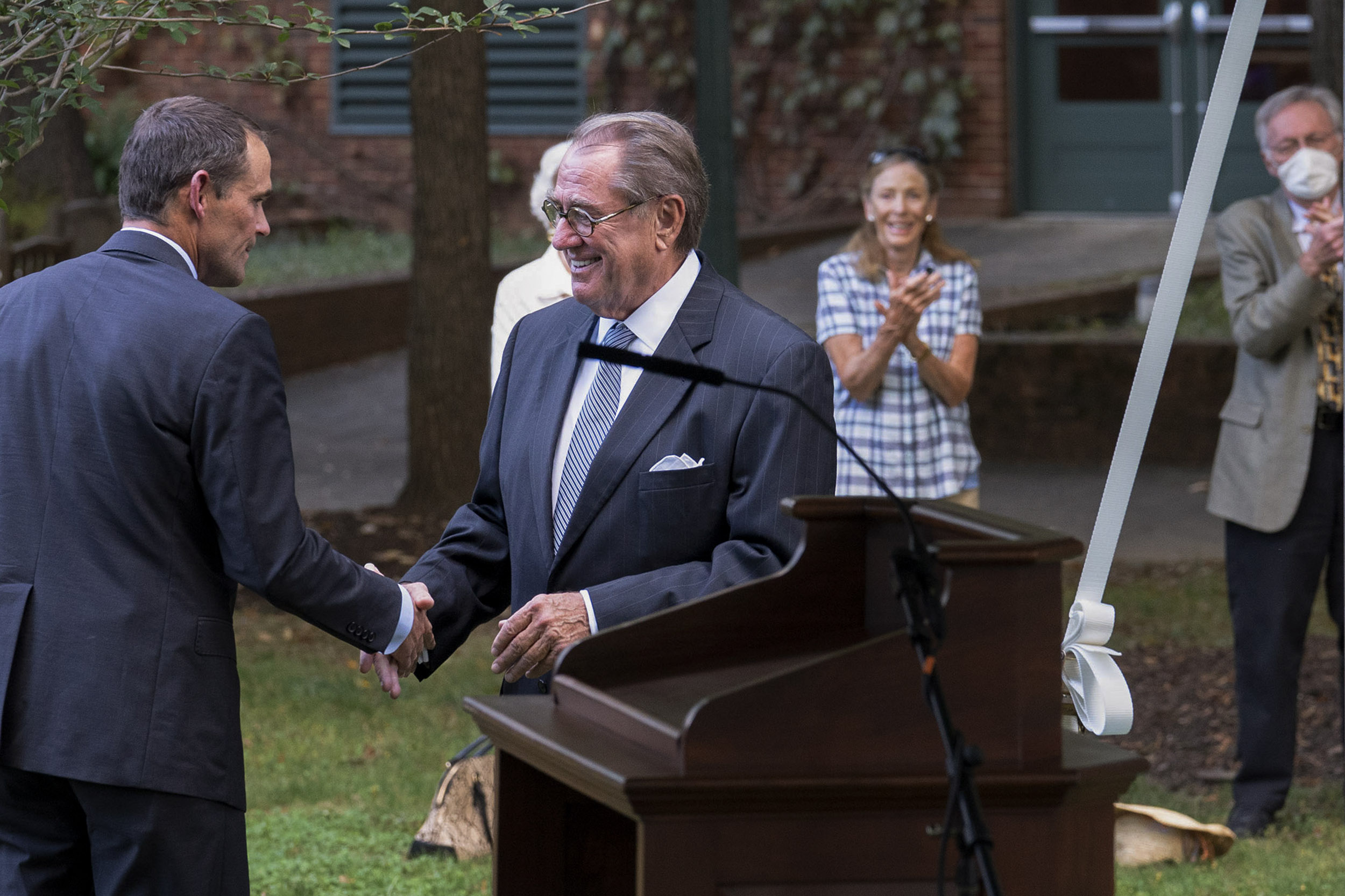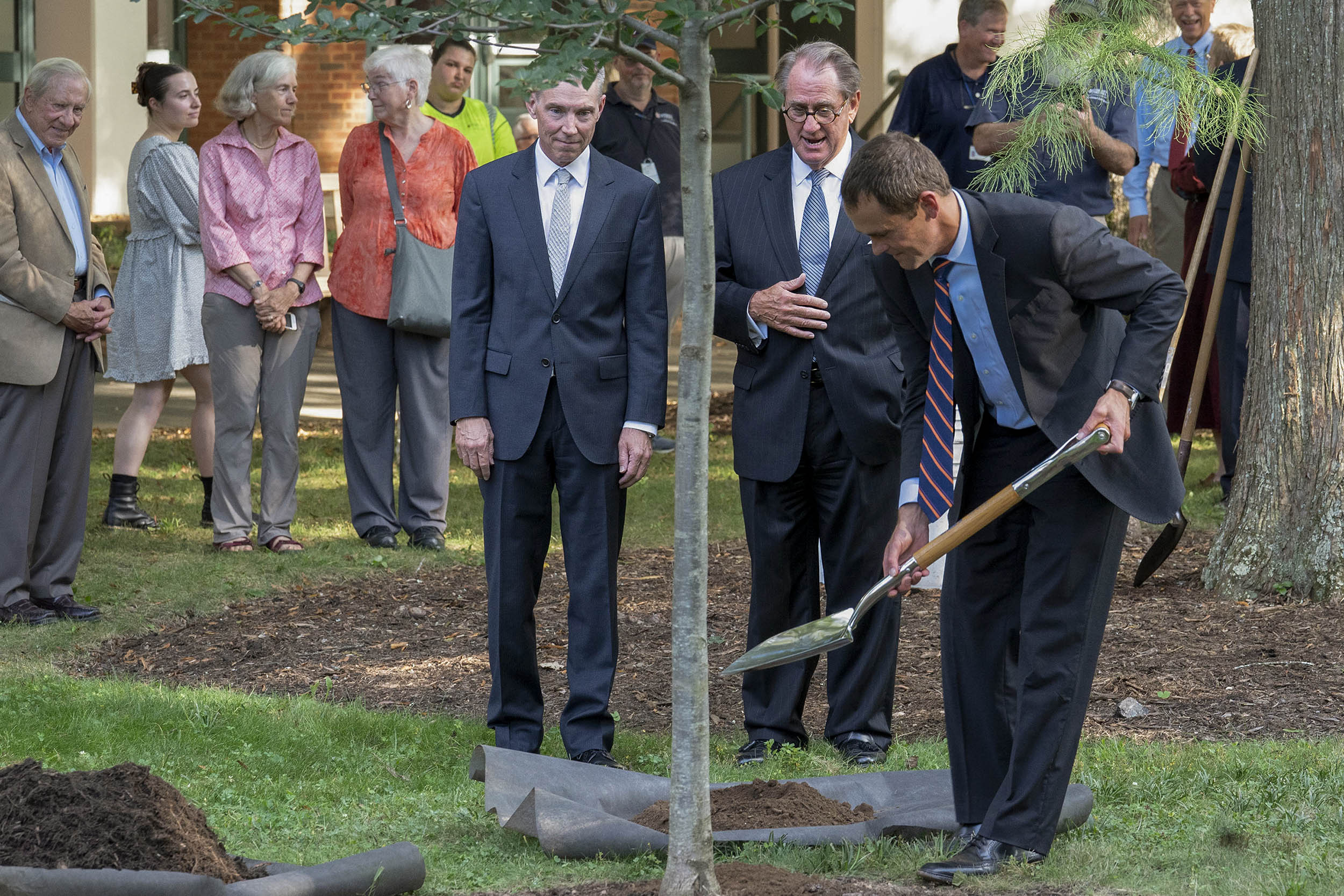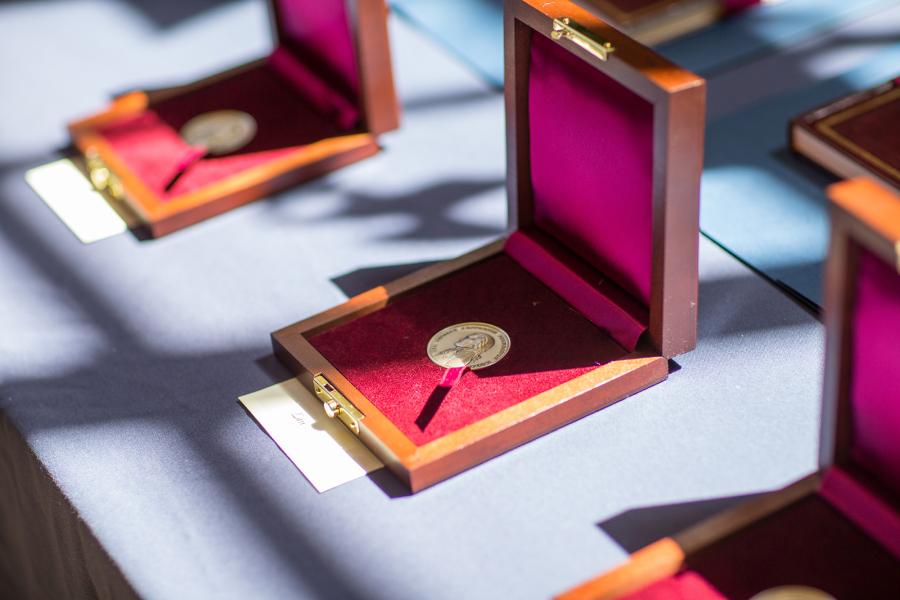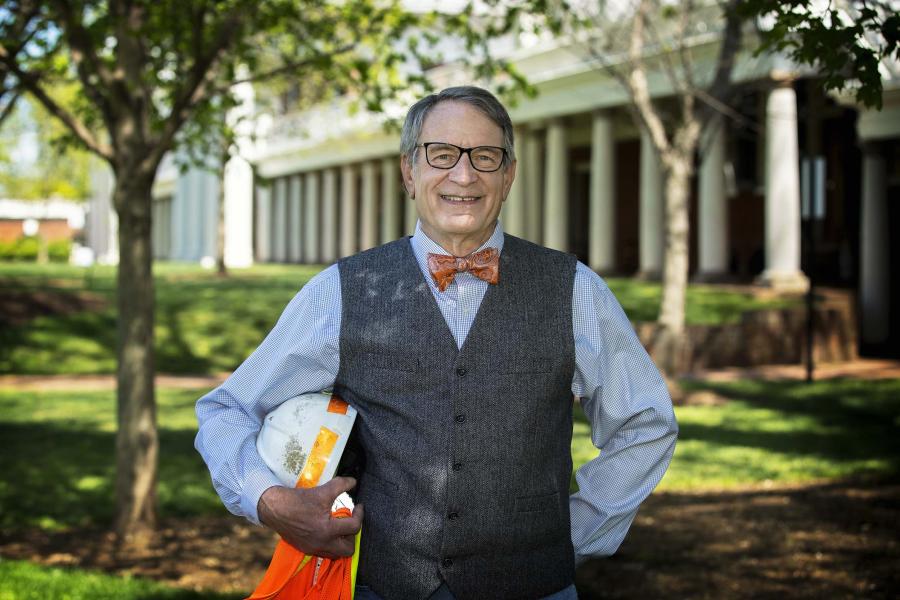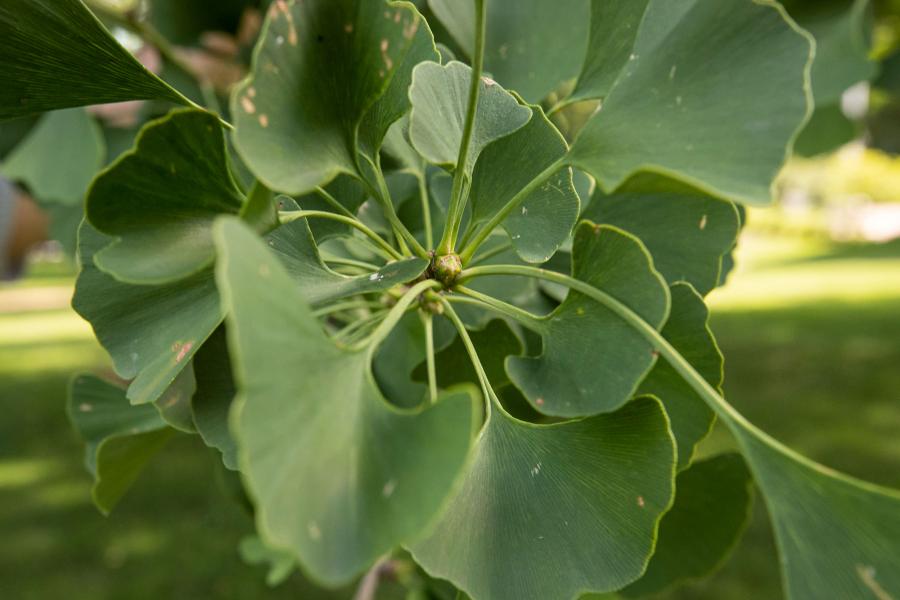Living memorials of luminaries who have contributed to the University in a variety of ways dot the Grounds of the University of Virginia. Recently, two more of those luminaries saw trees planted in their names.
Officials planted a Morton elm in front of Pavilion X on Thursday to honor President Emerita Teresa Sullivan, and a black gum tree in the Spies Garden at the School of Law to honor former Law School Dean John Jeffries on Oct. 5.
On Founder’s Day each year, the current University president traditionally presides over the official tree planting, with the Arboretum and Landscape Committee selecting the honorees. Jeffries was to have been honored in 2020 and Sullivan in 2021, but COVID-19 forced the postponement of both events.
University President Jim Ryan, who presided over this month’s two tree plantings, praised Jeffries, who first had been his teacher and later his colleague in the Law School, as “astute, gracious, concise, helpful and unfailingly loyal to his friends.”
Ryan said Jeffries had deep roots at the University and that he was well-known for his teaching, his scholarship and his service to the community.
“John is known far and wide as one of the best teachers to have ever taught at the Law School, and he’s been called ‘the most renowned teacher on a faculty known for outstanding teaching,’” Ryan said. “From my own experience, I would concur. John was my professor and was the best classroom teacher I have ever seen.”
